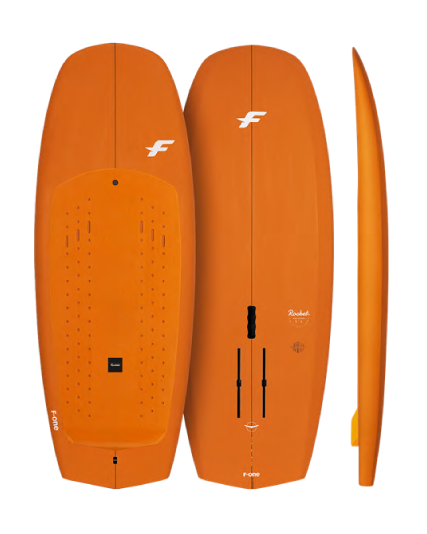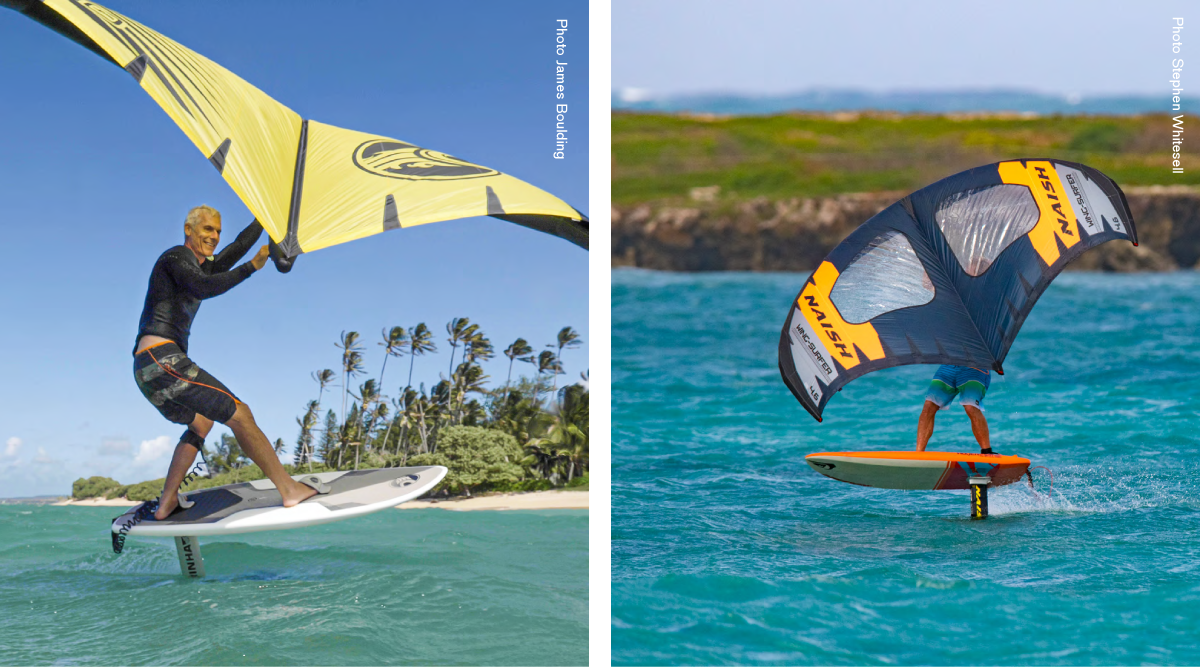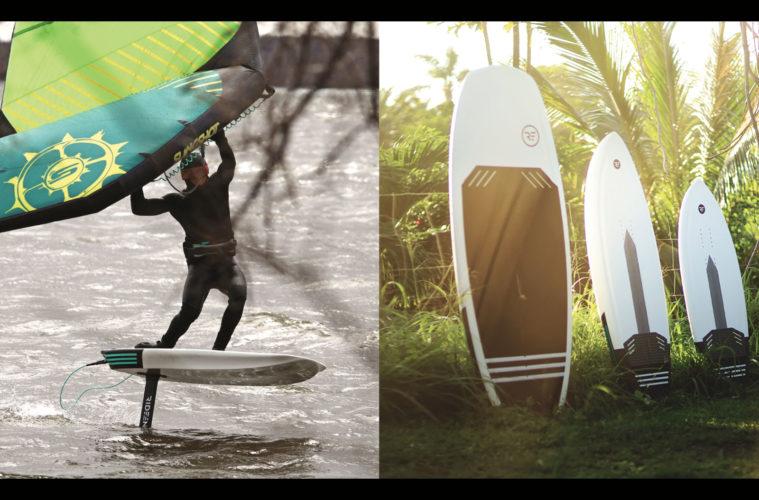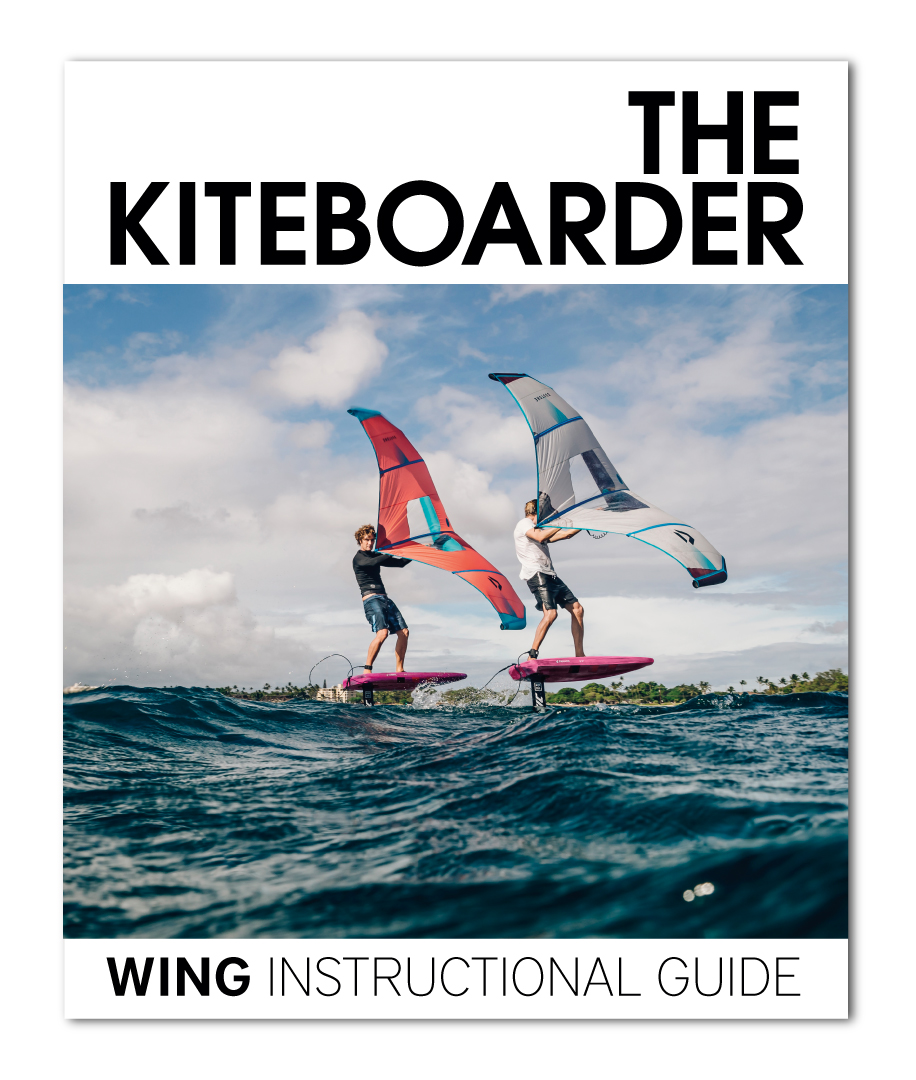When inflatable wings first hit the windsports market during the spring of 2019, arguably one of the most important pieces of equipment in the wingsurfing equation was missing. Early adopters started using standup paddle foil boards and advanced riders began using prone paddling foilsurf boards, but the ideal board shapes and volumes had yet to be figured out.
Fast forward a season and many of the brands are releasing wing-specific boards that are designed to facilitate the early learning curve and speed up intermediate and advanced progression. The obvious trends in wing-specific boards is shorter lengths combined with wider templates and thick depths that give riders floaty volume for easier waterstarts while still feeling nimble and responsive to pumping input and aggressive carving. Most riders will be looking for a medium volume board that offers sufficient float to help them balance on their knees and use the wing to easily rise to their feet and accelerate to foil-up. Only the most advanced riders will choose boards that completely sink and even then, probably not to learn with and eventually only when the wind is blowing 25 knots plus. While you can certainly commission a custom wing board from your local shaper, the big advantage to buying established wing models from wingsurfing brands is their access to vacuum epoxy technology that provides extra volume while keeping the weight down and feel amazingly light.
 When evaluating your wingsurfing board options you should start by taking stock of your body weight, the strength of the wind conditions where you will mostly be riding and your overall windsports IQ level. If you SUP, the volume that floats you for standup surfing will give you a good idea of the ballpark volume you should be looking for in a wingsurfing board. If you are naturally gifted at windsports or your spot has strong wind conditions, you might drop your SUP volume down by 10 liters to find a good start in a wingsurfing board. If the opposite is true, maybe add 10 liters. Some brands like F-One have volume guides based on your weight and skill level which helps you compute a ballpark volume. F-One recommends you take your weight in kilograms (1lb = .45kg, so do the math) and if you are a beginner add 40 units to your weight in kg to get the number of liters you should look for in a board (intermediate riders add 10 units, advanced riders subtract 15 units).
When evaluating your wingsurfing board options you should start by taking stock of your body weight, the strength of the wind conditions where you will mostly be riding and your overall windsports IQ level. If you SUP, the volume that floats you for standup surfing will give you a good idea of the ballpark volume you should be looking for in a wingsurfing board. If you are naturally gifted at windsports or your spot has strong wind conditions, you might drop your SUP volume down by 10 liters to find a good start in a wingsurfing board. If the opposite is true, maybe add 10 liters. Some brands like F-One have volume guides based on your weight and skill level which helps you compute a ballpark volume. F-One recommends you take your weight in kilograms (1lb = .45kg, so do the math) and if you are a beginner add 40 units to your weight in kg to get the number of liters you should look for in a board (intermediate riders add 10 units, advanced riders subtract 15 units).
One of the challenges when you start a sport is whether to buy the board you need as a beginner, or whether to skip a step and purchase the board you’d use as an intermediate. For some, skipping the beginner board will lead to frustration and failure to kick start the endorphin cycle that leads to a successful addiction. For others, the beginner board may only serve them for the first 10 sessions and seem like a waste of resources as they move to a smaller intermediate board. Your decision should really take into account your local conditions and aptitude. It’s worth noting that some intermediate riders are ending up with two boards, the beginner board that works in light wind and the intermediate
board that works in ideal winds.
 Some additional features to consider when looking at a wingsurfing board is the length, width, bottom shape, rail design and carrying handles. We’ll start with the last item because that is actually more important than you might think. While SUP boards traditionally have a handle routed into the deck of the board for easy carrying, a number of wingsurfing boards feature an inset handle on the bottom of the board. The handle on the bottom of the board is a huge feature when carrying a board with your foil. Since your arm can’t wrap around the extra width and grab the bottom rail like a kite foilboard, the bottom mast pointing away from you. This may seem like an inconsequential feature, but when you’re in the midst of an upwind walk of shame in 20 knots with a 120 liter board you will find a well thought out handle placement to be crucial.
Some additional features to consider when looking at a wingsurfing board is the length, width, bottom shape, rail design and carrying handles. We’ll start with the last item because that is actually more important than you might think. While SUP boards traditionally have a handle routed into the deck of the board for easy carrying, a number of wingsurfing boards feature an inset handle on the bottom of the board. The handle on the bottom of the board is a huge feature when carrying a board with your foil. Since your arm can’t wrap around the extra width and grab the bottom rail like a kite foilboard, the bottom mast pointing away from you. This may seem like an inconsequential feature, but when you’re in the midst of an upwind walk of shame in 20 knots with a 120 liter board you will find a well thought out handle placement to be crucial.
 With all things foil related, as you decrease the length of the board the performance you experience becomes increasingly more responsive. Most wing boards are sacrificing length while transferring the board’s volume into its thickness and its width. The extra width gives these boards more stability from side to side which is very helpful when riders are straddling on their knees getting ready to waterstart. Wingsurfing specific boards tend to have flat rockers to help with quick acceleration and early planing; some boards have subtle bottom shapes and others rather aggressive concave spines—some shapers believe that aggressive concave bottoms promote early release from the water, help with directional tracking prior to foiling and help soften porpoise crashes. Wingsurfing boards can come with or without inserts for straps and some decks are designed to be flat while others feature reverse concave. While these may seem like minor features, some riders will have strong personal preferences and others will prefer the inflatable model that you can travel anywhere with.
With all things foil related, as you decrease the length of the board the performance you experience becomes increasingly more responsive. Most wing boards are sacrificing length while transferring the board’s volume into its thickness and its width. The extra width gives these boards more stability from side to side which is very helpful when riders are straddling on their knees getting ready to waterstart. Wingsurfing specific boards tend to have flat rockers to help with quick acceleration and early planing; some boards have subtle bottom shapes and others rather aggressive concave spines—some shapers believe that aggressive concave bottoms promote early release from the water, help with directional tracking prior to foiling and help soften porpoise crashes. Wingsurfing boards can come with or without inserts for straps and some decks are designed to be flat while others feature reverse concave. While these may seem like minor features, some riders will have strong personal preferences and others will prefer the inflatable model that you can travel anywhere with.
While the board design and sizing of your first wingsurfing board may be one of the most challenging decisions to make, if you use these guidelines combined with feedback from peers and the input of your local kite store, you won’t stray too far from the product you need. If that isn’t helpful, just recall that the first adopters didn’t have any of the board technology we have today, so you’re already a massive leg up on those wingsurfers who walked to the beach uphill, both ways, in a snowstorm, dragging poorly adapted equipment.
Want more tips and tricks on foiling skills and technique? For everything from gear tech to getting a leg up on your first wingsurfing sessions, get our new Foil Instructional Guide.


